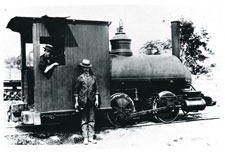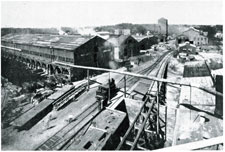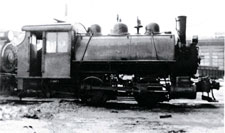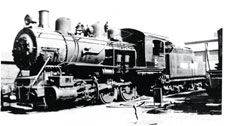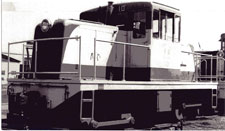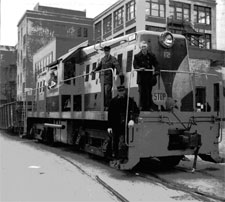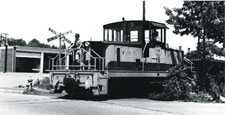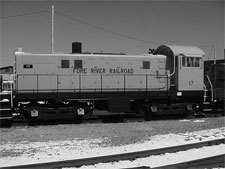The Fore River Railroad
Massachusetts Water Resources Authority
|
The Fore River Railroad's first locomotive |
|||||||||||||||||||||||||||
|
|||||||||||||||||||||||||||
|
The Fore River Railroad is owned by the Massachusetts Water Resources Authority and operated under contract by the Fore River Transportation Corporation. The 2.7-mile-long rail line runs from Quincy Point to the Greenbush Commuter Line in Braintree. The railroad ships Bay State Fertilizer for MWRA and fatty acids for a local manufacturing plant, Twin Rivers Technologies.
History: "The Railroad that Carried Battleships"
The Fore River railroad was developed by Thomas A. Watson, assistant to telephone inventor Alexander Graham Bell.
Watson used his telephone profits to start an engine and boat factory in East Braintree, “The Fore River Shipyard Engine Company.” In 1898, Watson’s company was commissioned by the U.S. Navy to build 2 destroyers and a cruiser.
In 1900 the company moved to a new facility at Quincy Point where the 3 vessels were completed.
At first, transporting heavy materials to Watson’s new shipyard was a slow and expensive process; the nearest railroad ended over 2 miles away, in East Braintree. Rail shipments had to be unloaded in Braintree, hauled to the Fore River, and finally, floated to Quincy. In 1902, Watson had a private rail line built along the river to bring supplies directly from Braintree to the shipyard. Operations began on June 1, 1903.
Frank Kyper, author of The Railroad that Came Out at Night - A Book of Railroading in and around Boston, describes the first freight car received in the shipyard, from the New Haven RR:
"The first steam locomotive to burnish the Fore River Rails was an 0-4-0 saddlemaker with an oversized wooden cab, which made it look as though it would tip back on its side any second."
The Bethlehem Steel Corporation purchased the Fore River Shipyard and Railroad just before World War I. During the war, shipyard workers built 36 destroyers and several "zero" class and "R" class submarines.
In 1919, the Fore River Railroad was formally incorporated as separate holding from the Bethlehem Steel shipyard.
During World War II, the Fore River Railroad Corporation's steam locomotives carried over 750,000 tons of construction materials for U.S. Navy cruisers, battleships, destroyers and aircraft carriers, including the Lexington.
General Dynamics Corp. purchased the shipyard and railroad in 1963.
In 1987, MWRA acquired the shipyard and railroad. From 1987-1992, MWRA used Fore River facilities as staging area and transportation system for the Boston Harbor Project. MWRA sold most of its shipyard property upon completion of the project. MWRA maintains the Fore River Railroad to transport its Bay State Fertilizer.
Source: The Railroad that Came Out at Night - A Book of Railroading in and around Boston by Frank Kyper. ©Frank Kyper 1977, 1997. Published by Cartsents Publications, Inc., Freedom-Springdale Road, Newton, NJ.
For more information, please contact :
General Info:
Matt Horan, MWRA
(617) 788-4397
Sales and Marketing:
Todd Lyman, General Manager, Fore River Transportation Corp.
(857) 207-2152
